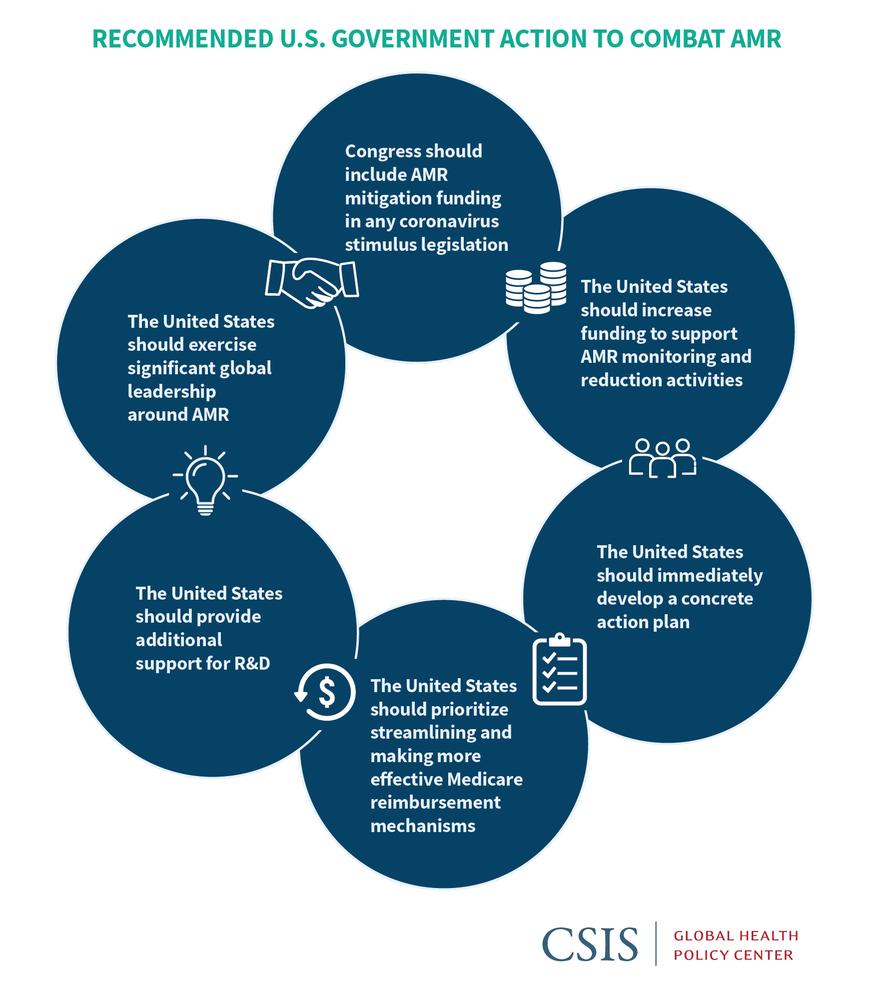As antibiotic resistance continues to climb to dangerously high levels across the globe, new resistance mechanisms are threatening hospitals' capacity to treat common infections. To prevent patients from contracting potentially deadly drug-resistant infections, healthcare leaders are challenged to implement strategies that prioritize accurate diagnostic testing and proper antibiotic use.
This article is sponsored by Accelerate Diagnostics.
At Becker's Hospital Review 7th Annual CEO + CFO Roundtable in Chicago Nov. 12, Michael Osterholm, PhD, director of the center for infectious disease research and policy at the University of Minnesota in Minneapolis, discussed several strategies leaders can focus on to curb the effects of antibiotic resistance.
"When looking at infectious disease trends, nothing will have as large of a global effect over the next few decades as antimicrobial resistance," Dr. Osterholm said. "Antimicrobial resistance is as much a part of our world as gravity. We've overprescribed and overused antibiotics over the past 100 years, so we shouldn't be surprised today that we're seeing resistance challenges as these microbes evolve to survive."
If healthcare institutions do not act now, we may soon cross into a post-antibiotic global era where common infections and minor injuries prove deadly, Dr. Osterholm said. However, if institutions place greater emphasis on strategies to fight this resistance, such as ensuring appropriate antimicrobial therapy and developing robust antibiotic stewardship initiatives, healthcare facilities can ensure patients have better outcomes now and for decades to come.
Five key strategies to mitigate the effect of antimicrobial resistance
During the presentation, Dr. Osterholm outlined five strategies for healthcare leaders to consider in the fight against antibiotic resistance:
1. Use existing antimicrobials strategically. In recent years, there has been a major reduction in the pipeline for the development of new antibiotics, which means there won't be many new drugs to use in the future, Dr. Osterholm said. "We've had many recent compounds over the past 10 years that initially brought great excitement as new treatments, but were found to be very toxic when put into an animal or human system."
The "easy antibiotics," or those most likely to make it to market and successfully treat infections, are gone, he added.
"I don't want to say that there won't be new antibiotics developed, but they won't be the savior against antibiotic resistance," Dr. Osterholm said. "We must save the antibiotics we have now and ensure we use them as wisely as possible."
2. Regulate antimicrobial use in animals and humans. "Just like global climate change, if we eliminated all the carbon dioxide emitted by the United States, the rest of the world would still play a key role," Dr. Osterholm said. "Same with antibiotic resistance. One of the biggest challenges we have is how to control and limit antimicrobial use worldwide."

In nations that lack standard treatment guidelines, healthcare providers and veterinarians overprescribe antibiotics and patients often overuse them, meaning global policymakers must strengthen antibiotic policies and regulate appropriate use and disposal of quality medicines, according to the World Health Organization.
Beyond policy changes, Dr. Osterholm said individual institutions can drive some of the greatest changes in regulating antibiotic use. "Addressing antibiotic resistance will involve decisions made on an institution-by-institution basis, such as ensuring hospitals have the correct antibiotic therapy for each infection determined in their pharmacies and medical practice standards."
3. Advance vaccine development to curb antibiotic use. "The use of vaccines to curb antibiotic use has tremendous potential as an alternative approach to prevent and treat infections of resistant organisms," Dr. Osterholm said. To prevent and control the spread of antibiotic resistance, healthcare leaders can focus on investments in researching and developing new vaccines to prevent common infections.
"I predict we will see greater vaccine development in the next few years," Dr. Osterholm added. "If we had vaccines, we wouldn't have to deal with the actual infection and the potential for resistance."
4. Implement faster diagnostic testing. "I imagine anybody would laugh at me if I said, 'I've got this great new pressure cuff for blood pressure — you take it and within 24 hours you'll have a reading.' But much of the diagnostic testing we do at the laboratory is like that," Dr. Osterholm explained.
However, emerging technology can help providers diagnose infections much faster. For example, Dr. Osterholm discussed technology from Accelerate Diagnostics, which identifies an infection in less than 90 minutes and determines antibiotic susceptibility in less than seven hours. "With an infectious disease, these extra minutes could significantly change patient outcomes," Dr. Osterholm said. "And we're seeing rapid testing becoming much more of a reality — a faster and more specific diagnostic result could help bring better outcomes for your patients and your institution."
5. Bolster antibiotic stewardship initiatives. Every healthcare organization should be required to have an active, aggressive and data driven antibiotic stewardship program, Dr. Osterholm said. "If senior leadership isn't involved in developing these programs, they won't succeed."
When considering what actions to take around antibiotic stewardship initiatives, Dr. Osterholm recommended leaders tackle the following questions:
"It is critical that senior leadership is involved in addressing these questions, because institutions can do a great deal on their own to ensure providers are using the correct antibiotics and only using them when needed."
Addressing the growing threat of antibiotic resistance
As the threat of antibiotic resistance continues to rise worldwide, hospitals and healthcare organizations can help mitigate the threat by prioritizing proper antibiotic use, policy changes to uphold consistent standards for antibiotic use, investments in vaccines, faster diagnostic testing and antibiotic stewardship initiatives.
These actions are not only critical for patients and communities in the present-day, but for decades and generations to come.
"We are beginning to sit on the cliff edge of a post-antibiotic era," Dr. Osterholm said. "This is not just about a problem today, it's about a problem that our kids and grandkids are going to bear in a very big way."
